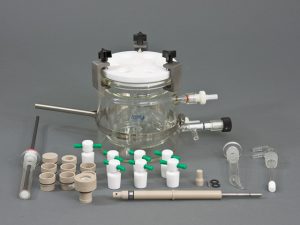In advance of the NACE 2018 Corrosion Conference and Expo April 15 – 19, 2018 in Phoenix, AZ, we thought we would highlight some of the ways researchers study pipeline corrosion via electrochemical techniques. Electrochemistry plays a vital role in this field of study because it allows what was historically a cumbersome, expensive, and materials-intensive process to be simplified and dramatically downsized to laboratory-scale experiments.
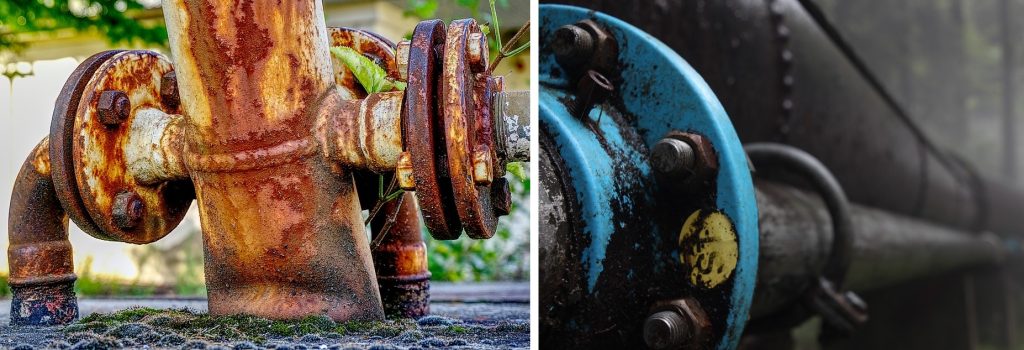
Corrosion of commercial pipelines is a persistent issue that has resulted in significant research efforts from universities and oil/energy companies alike
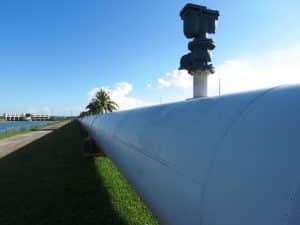
Early research techniques for investigating pipeline corrosion were not convenient or easy. Interstate pipelines are typically several feet in diameter and transport tremendous quantities of fluid over long periods of time. To simulate this system, it was necessary to either construct a representative pipeline section and circulate huge volumes of fluid over a long time, or else perform a type of “wheel test” or “cage test” where a slightly more manageable experimental setup could be used in place of an actual pipeline. However, while these tests are easier and certainly less expensive than a physical pipeline setup, they can still be rather material-intensive, bulky or tricky to handle, and often suffer from inefficiencies and inaccurate data.
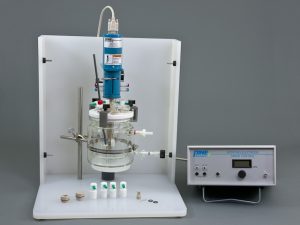
Complete 15 mm OD Rotating Cylinder Electrode (RCE) setup manufactured by Pine Research
Electrochemistry has opened the door to easier, more efficient techniques for studying pipeline corrosion in recent years. Experimentally, the flow of fluid through a stationary steel pipe is scaled down and simulated by instead rotating a cylindrical steel coupon (representing the pipeline) in a glass cell containing usually just 1 L of liquid (representing internal or external pipeline fluids, e.g. oil and/or saltwater). This setup eliminates the need to continuously flow fluid, which is costly and often difficult to implement in a laboratory setting, and reduces the size and cost of pipeline steel under study. Considering such research is aimed at intentionally corroding the steel being studied, having a small and conveniently-changed cylindrical sample is a huge benefit to facilitate efficient experiment turnover. This type of electrochemical experiment is referred to as a Rotating Cylinder Electrode (RCE) test.
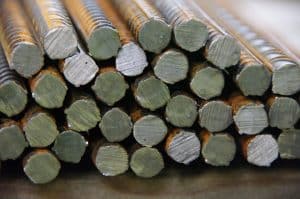
The most popular electrochemical method used with RCE testing is called Linear Polarization Resistance (LPR). During LPR, a potentiostat/galvanostat is used to slowly and smoothly monitor the potential of the cylinder insert near its measured Open Circuit Potential (OCP), typically while the cylinder is rotated at varying rotation rates using an electrode rotator. Rotation of the electrode in solution creates turbulent flow and simulates the shear stress experienced at the wall of a real pipeline during operation. More detailed information on how RCE tests mathematically simulate pipeline flow can be found in our RCE technical document, and more general information is also available in our document index.
Using a full RCE experimental setup allows researchers to collect electrochemical corrosion rate data quickly and consistently. Pine Research has been manufacturing these RCE systems and potentiostat/galvanostats for many years to aid corrosion research, and this year Dr. Li Sun and Mr. Joe Holmes can be found at the NACE Corrosion Conference and Expo at booth 1426. Stop by and see how Pine Research can provide a complete electrochemistry solution for your corrosion testing needs!
[call_to_action color=”red” button_text=”RCE Setups” button_url=”https://pineresearch.com/shop/product-category/corrosion-products/complete-15mm-rce-kits/” button_icon=”arrow-circle-right” layout=”vertical”] See the great RCE products Pine Research has to offer! [/call_to_action]References
- C. Lam, “Statistical Analyses of Historical Pipeline Incident Data with Application to the Risk Assessment of Onshore Natural Gas Transmission Pipelines” (2015), Electronic Thesis and Dissertation Repository, 2925. http://ir.lib.uwo.ca/etd/2925
- S. Papavinasam, R. W. Revie, and M. Bartos, “Testing Methods and Standards for Oilfield Corrosion Inhibitors” (2004), CORROSION 2004, NACE International, NACE-04424.
- F. H. Walters, J. D. Garber, and S. J. Garber, “Ranking Corrosion Inhibitors by Percent Protection Misleading”, Oil and Gas Journal 92:41 (1994).

